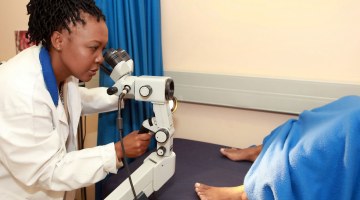 The Positively Aware 16th Annual HIV Drug Guide, widely recognized throughout the country as the “must-have” reference tool for HIV service providers and consumers alike, is now available.
The Positively Aware 16th Annual HIV Drug Guide, widely recognized throughout the country as the “must-have” reference tool for HIV service providers and consumers alike, is now available. There are now 30 FDA-approved HIV therapies to choose from, and finding the most effective and appropriate medication regimen is vital to success in treating HIV. The guide provides important information to individuals living with HIV as well as their caregivers on how best to manage their treatment.
This 80-page issue of Positively Aware devotes a full page to each approved HIV medication, plus four experimental medications, three of which are slated for approval later this year: the integrase inhibitors elvitegravir and dolutegravir (the latter now available through expanded access), the new upcoming single-tablet regimen known as the “Quad,” and the pharmaco-enhancer boosting agent cobicistat.
The pullout drug chart, sponsored by Walgreens, includes dosing information, as well as food and liquid requirements for the drugs, along with a photo to help easily identify each medication. Readers will also find detailed information on side effects, drug interactions, and current trends in HIV care and treatment.
This year’s guide also has an updated and expanded article on HIV drug co-pay and patient assistance programs being offered by pharmaceutical companies, including an easy to read chart, plus information on AIDS Drug Assistance Programs, Medicare, and Medicaid.
“It’s so critical that people know that there is help available when accessing and paying for treatment,” Positively Aware Editor Jeff Berry said. “There is no reason why anyone should be denied access to lifesaving medication based solely on an inability to pay for their drugs or co-pays, or because they cannot afford health insurance.”
One of the most popular features of the guide is the viewpoint given on each medication from a well-respected physician and an activist. Contributors to this year’s Drug Guide include Dr. Joel Gallant, professor of medicine and epidemiology at the Johns Hopkins University School of Medicine’s Division of Infectious Diseases, and associate director of the Johns Hopkins AIDS Service; activist Joey Wynn, director of public policy at Broward House in Fort Lauderdale, Florida; Renata Smith, PharmD, clinical assistant professor in HIV/infectious diseases at the University of Illinois at Chicago; and Associate Editor Enid Vázquez.
“Positively Aware’s Annual HIV Drug Guide is a great source for cutting edge treatment information, not only for those of us who prescribe these drugs, but for our HIV-positive patients as well,” Gallant said. “I was happy to be asked again to contribute to this year's edition — it’s always an enjoyable project.”
Positively Aware is an internationally known and respected magazine devoted to HIV treatment and health. It has a circulation of over 100,000, and is published bi-monthly by Test Positive Aware Network (TPAN). Founded in 1987, TPAN is Chicago’s oldest peer-led AIDS service organization and specializes in treatment information, support services, and prevention.
To order copies of the magazine, call (773) 989-9400 or distribution@tpan.com. For more information about TPAN and Positively Aware magazine visit tpan.com and positivelyaware.com.
[Content that is linked from other sources is for informational purposes and should not construe a Mapping Pathways position.]



















